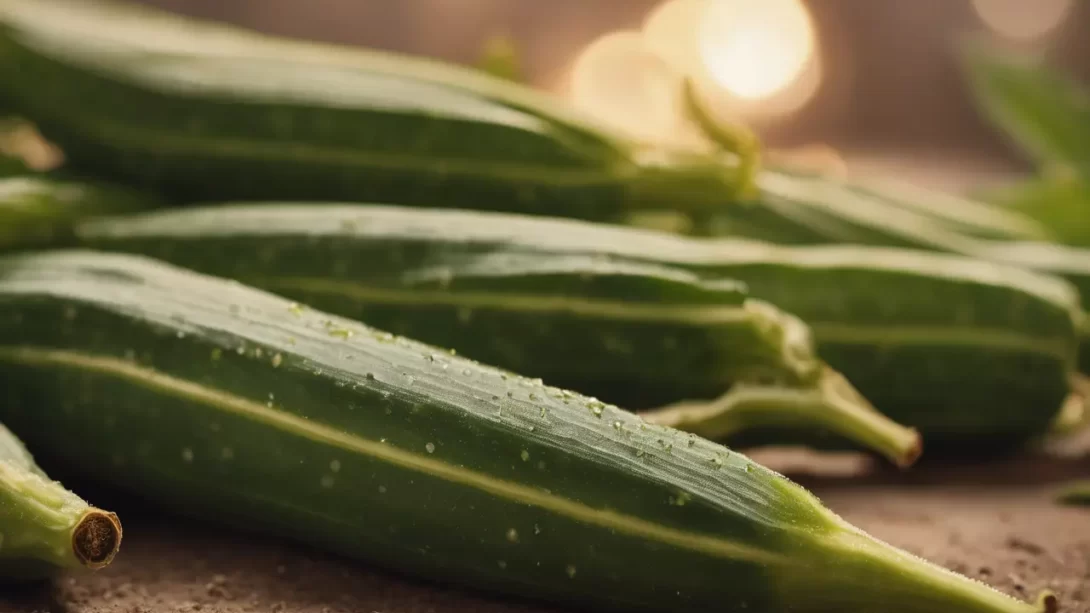In the diverse world of vegetables, it’s not uncommon for some to be mistaken for others. Okra and peppers, for instance, are often subjects of such confusion, particularly among those exploring gardening or cooking. This article aims to clarify the botanical classification of okra and peppers, shedding light on their differences and debunking the misconception that okra is a type of pepper.
Okra
Okra, scientifically known as Abelmoschus esculentus, is a flowering plant known for its edible green seed pods. Originating in Africa, okra is a staple in cuisines across the world, particularly in the Southern United States, parts of Africa, and the Middle East. The plant thrives in warm climates and is characterized by its long, ridged pods and hibiscus-like flowers. Okra is not only valued for its distinct flavor and texture in culinary uses but also for its nutritional benefits, including high fiber, vitamin C, and folate content.
Peppers
Peppers, on the other hand, belong to the Capsicum genus and are renowned for their vast variety and usage across global cuisines. They range from sweet bell peppers to spicy chili peppers. Native to the Americas, peppers have been integrated into numerous culinary traditions, appreciated for their flavor, color, and in the case of hot peppers, their heat, which is due to the compound capsaicin. Nutritional benefits of peppers vary among types, but they are generally rich in vitamins A and C, and, in the case of hot peppers, can offer metabolism-boosting properties.
Botanical Classification
The botanical classification reveals the fundamental differences between okra and peppers. Okra belongs to the Malvaceae family, also known as the mallow family, which includes a variety of flowering plants. Its closest relatives are plants like cotton and hibiscus. Peppers, in contrast, are part of the Solanaceae family, commonly referred to as the nightshade family. This family includes a wide range of plants, from edible ones like tomatoes and eggplants to poisonous varieties like belladonna.
Within their respective families, okra and peppers belong to different genera. Okra falls under the Abelmoschus genus, while peppers are classified under the Capsicum genus. These distinct classifications underscore their differences in physical characteristics, growth habits, and environmental preferences.
Culinary Uses and Misconceptions
Culinary practices often contribute to the confusion between okra and peppers. While both are popular in a range of dishes, their uses are quite distinct. Okra is often used for its ability to thicken stews and soups, thanks to its mucilaginous texture when cooked. It’s also commonly fried, pickled, or eaten raw in salads. Peppers, meanwhile, are used for their flavor and heat (in the case of chili peppers) or their sweet, mild taste (as in bell peppers). They are used in a variety of ways, from being stuffed and baked to being used raw in salads, or cooked in stews and sauces.
The misconception that okra is a type of pepper might stem from their shared use in spicy cuisines, like in Cajun and Creole cooking, where both ingredients are prevalent. However, their roles in dishes are quite different, reflecting their unique tastes and textures.
Health Benefits and Nutritional Comparison
Nutritionally, okra and peppers offer distinct benefits. Okra is known for its high fiber content, which aids in digestion and helps maintain blood sugar levels. It is also a good source of vitamin C, vitamin K, and folate, along with antioxidants that support overall health. Okra’s unique component, mucilage, is not only beneficial for thickening dishes but also for supporting gut health.
Peppers, in their varied forms, offer a range of nutritional benefits. Bell peppers are rich in vitamins A and C, potassium, and fiber, and are known for their high antioxidant content, including compounds like beta-carotene and quercetin. Hot peppers, like jalapeños and habaneros, contain capsaicin, which is known for its pain-relief properties and potential to boost metabolism.
Conclusion
In conclusion, while okra and peppers may share some superficial similarities and are often used in the same types of cuisine, they are distinctly different in terms of botanical classification, culinary use, and nutritional content. Okra, belonging to the Malvaceae family, and peppers, a member of the Solanaceae family, offer unique benefits and characteristics that set them apart. Understanding these differences is key for gardeners, chefs, and nutrition-conscious individuals alike. So, to answer the question: no, okra is not a pepper, but rather a unique and nutritious vegetable in its own right, worthy of appreciation for its distinctive qualities and contributions to diverse culinary traditions.



